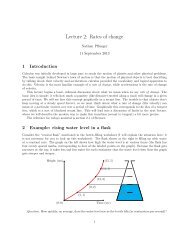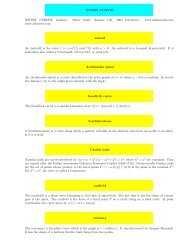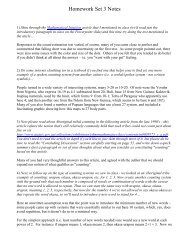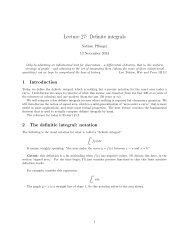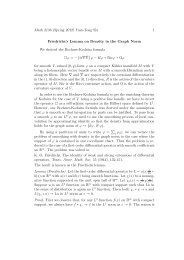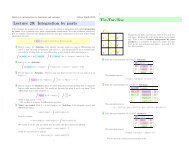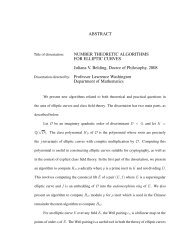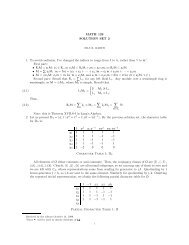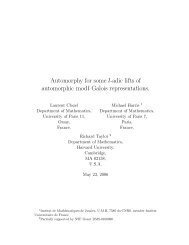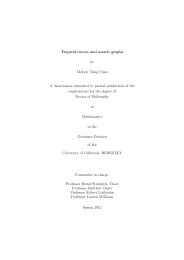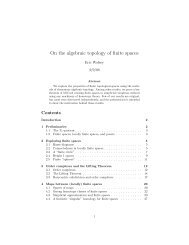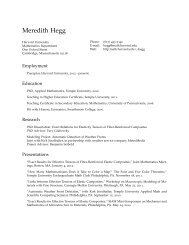Gauge theory for embedded surfaces, II
Gauge theory for embedded surfaces, II
Gauge theory for embedded surfaces, II
Create successful ePaper yourself
Turn your PDF publications into a flip-book with our unique Google optimized e-Paper software.
<strong>Gauge</strong> <strong>theory</strong> <strong>for</strong> <strong>embedded</strong> <strong>surfaces</strong>, <strong>II</strong> 43<br />
<strong>for</strong> some unique t. Since the self-dual <strong>for</strong>ms have positive square, a necessary<br />
constraint on t is that t>−n/2.<br />
Lemma 7.4. For l ′ ≤ l, the moduli space M α 0,l ′ contains reducible solutions if<br />
and only if<br />
t = l′ − αn<br />
α .<br />
Proof. By [KrM] (section 5(iii)), a solution exists only if there is a line bundle L<br />
with<br />
c1(L) 2 =0<br />
c1(L)[Σ]=−l ′<br />
c1(L)+α[Σ]∈H −<br />
If we write c1(L) asλ[Σ]+µ[F] and solve the first two constraints above, we<br />
find that either λ =0andµ=−l ′ ,orλ=−2l ′ /n and µ = l ′ . The latter option<br />
is ruled out <strong>for</strong> l ′ ≤ l since λ must be an integer. So c1(L)=−l ′ [F].<br />
The third condition now says that α[Σ] − l ′ [F ] must be orthogonal to H + .<br />
From (7.1) and (7.3) we obtain αn+αt−l ′ = 0, which gives the condition in the<br />
lemma. ⊓⊔<br />
Lemma 7.5. Let α0 be given as in the proof of (4.13). Then <strong>for</strong> α



